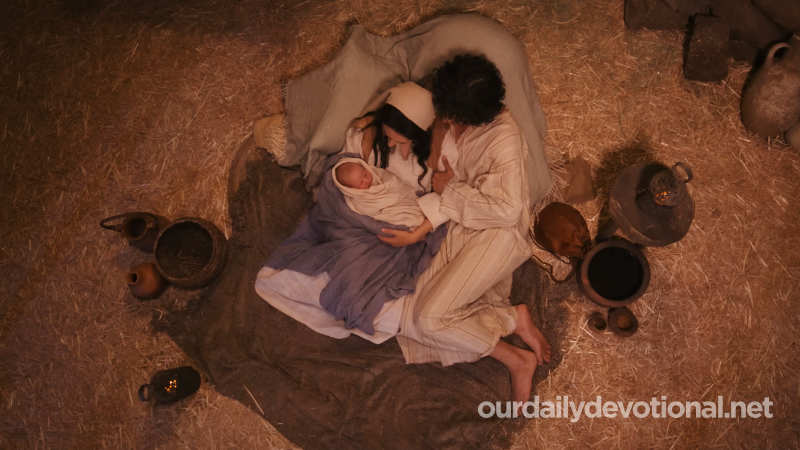The Holy Scriptures describe to us a flora corresponding to the subtropical regions. In Palestine aridity alternates with fertility.
The most fertile regions of the biblical lands were the plain of Sharon along the coast (Is. 35:2), the pine and cedar forests of Lebanon and Hermon, and the valleys near Jericho (Ex. 9:25 ), the plain of Esdraelon in Galilee and certain regions beyond the Jordan.
The trees known to the biblical authors were of the woody types, shrubs and resinous wood trees. Trees are used, in addition to their natural uses, to teach various truths. Thus, they symbolize the righteous man (Ps. 1:3), who "is like a tree planted by the stream of water"; he will bear good fruit in his due season.
Whoever trusts in the Lord is like the tree that will have abundant foliage and that will not fear the heat because its roots will be sunk in the water that will preserve its greenness (Jer. 17:8). Whoever puts his trust in another man becomes like a tamarind tree in the steppe, which lives in arid and dry places and never prospers (Jer. 17:6). The same analogy also applies to towns (Hos. 14:6-8).
Sometimes trees are personified in poetic figures that praise and celebrate the works of God; thus, in Isaiah they applaud (Is. 55:12); in the Psalms they rejoice and are satisfied by the generosity of the Creator (Ps. 96:12; 104:16); They understand the works of the Lord in Ezekiel (Ez. 17:24).
(a) AT:
Some trees in the Old Testament have a special meaning in the history of God's people, since some event of special significance took place near them; thus: the oak of More in Hebron, where the Lord appeared twice to Abraham (Gen. 12:6-7; 18:1); the oak forest of Mamre in Hebron, where Abraham built an altar (Gen. 13:8); the terebinth of Bethel; the oak of Jabez, where the inhabitants of the vicinity buried Saul and his sons; the oak of Ophra, where the Lord appeared to Gideon; the valley of Elah, where David killed Goliath; the tamarisk of Beersheba, where Abraham, after establishing an alliance with Abimelech, built an altar to the Lord; the tamarisk of Gibeah, where Saul received the news that David had been discovered; Deborah's palm tree, where she used to sit and where the Israelites went up together for judgments; the pomegranate tree of Migron, where Saul was sitting when Jonathan attempted to cross the enemy ranks of the Philistines (Gen. 12:6-7; 18:1; Gen. 13:8; 1 Kings 13:14; 1 Chron. 10: 12; Judges 6:11; 1 Sam. 17:2; Gen. 21:23-33; and 1 Sam. 22:6; Judges 4:5; 1 Sam. 14:2).
These passages and many others indicate to us the extent to which trees enjoy a privileged, if accidental, character in the actions of God's people. The prophets and laws order the destruction of every tree that may be, even indirectly, an object of veneration or worship that should only be rendered to the Lord (Deut. 12:2-3; 16:21; Jer. 2:20).
(b) NT:
In the New Testament the tree is mentioned in the general sense of vegetation, or as in the case of Jesus' parables: when he compares the kingdom of God to a leafy tree in which all men have shelter; or when he compares it to the mustard seed (Mt. 13:22; Luke 13:19); or when he teaches to discern good men from bad ones by their fruits (Mt. 7:17-19); The new shoots of the fig tree herald summer (Mt. 24:32; Luke 21:29).
The tree also serves to symbolize the final reprobation of the people who did not receive Christ, in the gestures and words of the Baptist, when the ax is already placed at the root to cut it down and throw it into the fire (Mt. 3:10; Lk. 3 :9). Finally, barren trees indicate the curse that prevents them from bearing good fruit (Mt. 34:32; Luke 21:29). In relation to the different trees, see the respective articles.
exc, TREE (A.T.)
tip, FLOWER
Some trees in the Old Testament have a special meaning in the history of God's people, since some event of special significance took place near them; thus: the oak of More in Hebron, where the Lord appeared twice to Abraham (Gen. 12:6-7; 12:18-1); the oak forest of Mamre in Hebron, where Abraham built an altar (Gen. 13:8); the terebinth of Bethel; the oak of Jabez, where the inhabitants of the vicinity buried Saul and his sons; the oak of Ophra, where the Lord appeared to Gideon; the valley of Elah, (means the valley of the Oak or, valley of the Oak), where David killed Goliath; the tamarisk of Beersheba, where Abraham, after establishing an alliance with Abimelech, built an altar to the Lord; the tamarisk of Gibeah, where Saul received the news that David had been discovered; Deborah's palm tree, where she used to sit and where the Israelites went up together for judgments; the pomegranate tree of Migron, where Saul was sitting when Jonathan attempted to cross the enemy ranks of the Philistines (Gen. 12:6-7; 18:1; Un. 13:8; 1 Kings 13:14; 1 Chron. 10: 12; Judges 6:11; 1 Sam. 17:2; Gen. 21:23-33; and 1 Sam. 22:6; Judges 4:5; 1 Sam. 14:2).
These passages and many others indicate to us the extent to which trees enjoy a privileged, if accidental, character in the actions of God's people. The prophets and laws order the destruction of every tree that may be, even indirectly, an object of veneration or worship that should only be rendered to the Lord (Deut. 12:2-3; 16:21; Jer. 2:20).
Meaning of TREE
The Holy Scriptures describe to us a flora corresponding to the subtropical regions. In Palestine aridity alternates with fertility.







